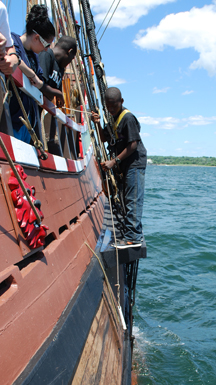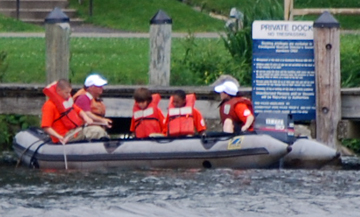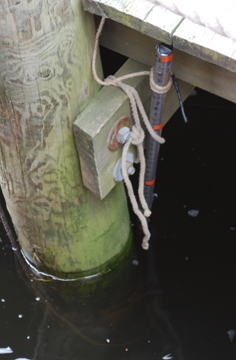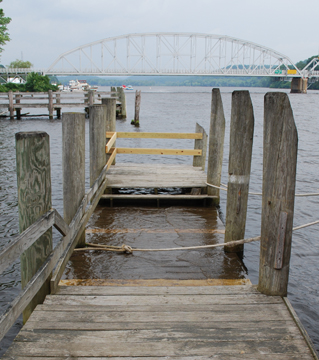 |
|
|

When traveling through uncharted waters, one of the most basic questions a ship's crew needs to be able to answer is also one of the most important: How deep is the water? In fact, as Juet's journal entries show, Captain Hudson and his crew repeatedly faced the danger of running aground while exploring the river that would bear his name.
On this voyage, the research team of DeNiro, Matt, and Nadia measured the depth of tide as a component of their presentation project.
|

Monitoring water depth is just as important for us on board the Replica Ship Half Moon. Of course, in 21st century the Connecticut River has been throughly charted and (unlike Captains Hudson or Block) we have experience navigating this river, but a low tide and a thick silt deposit could still conspire to run our ship aground. For this reason, we always personally probe the water's depth before visiting a new dock.
|

When in doubt, we take soundings (measure the water's depth) with the same tool Hudson's crew would have used: a lead line (or sounding line). Flags attached to the lead line mark depth in 6-foot increments (fathoms). The Half Moon has a draft of 8-1/2 feet (extending that far underwater), so it needs at least a fathom and a half of water to stay clear of the bottom. In the first photo above, you can see DeNiro using the lead line during our data collection layover in Niantic Bay.
During our second layover at East Haddam, we rigged a simple depth meter and secured it to the dock. Our crew would be monitoring the depth of tide for a full 24 hours, so we wanted a safe and simple method of taking soundings for the benefit of the students on anchor watch.
|

In Hudson's day, crews would even use their lead lines to take samples of the river bottom. They could fill a small hollow on the bottom of the line's lead weight with tallow or grease, then see what stuck to this goo when they retrieved the line. Silt or sand made for a fine anchorage, but clean tallow warned of rocks lurking below, making anchorage dangerous if not impossible.
|
| |
|
|

